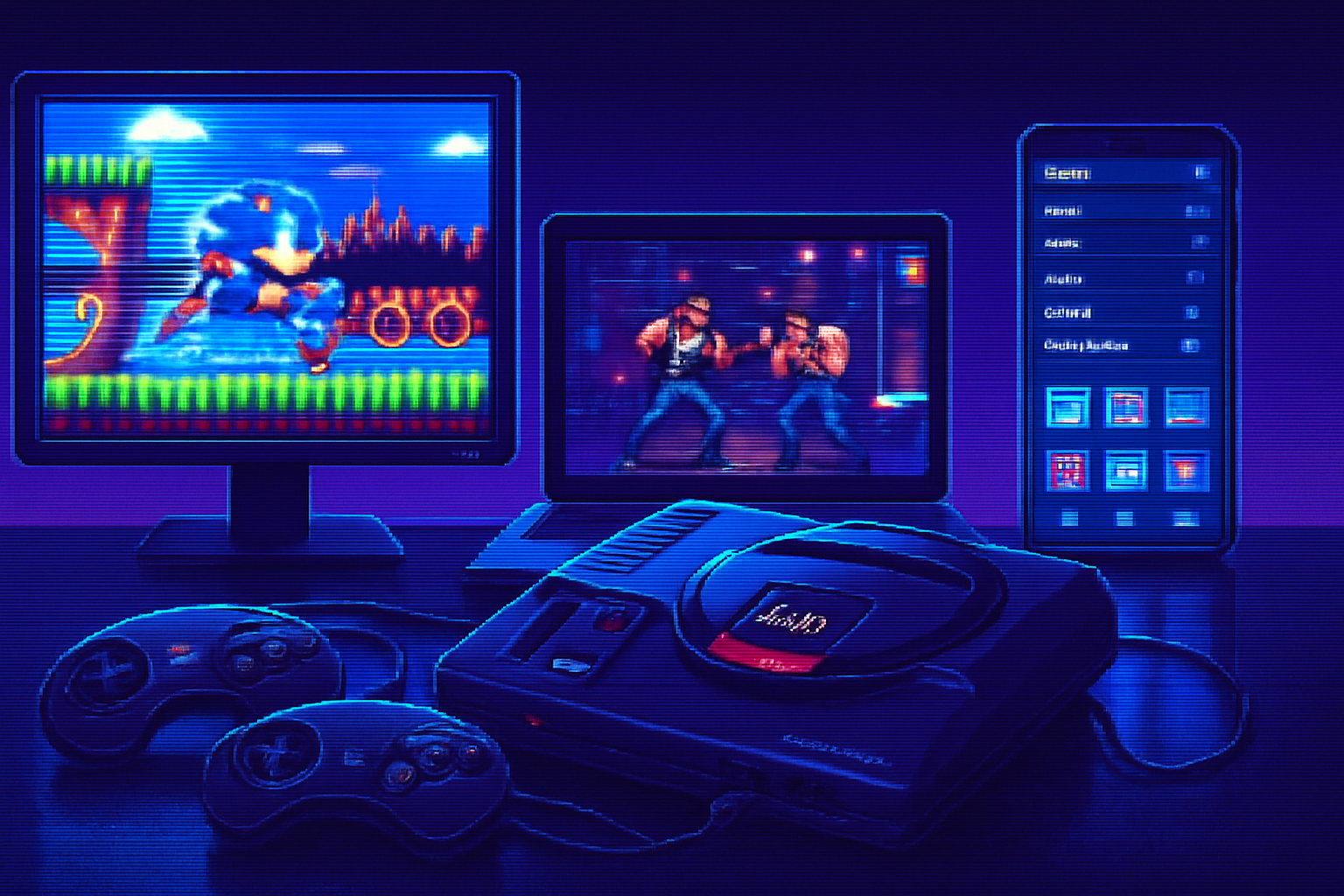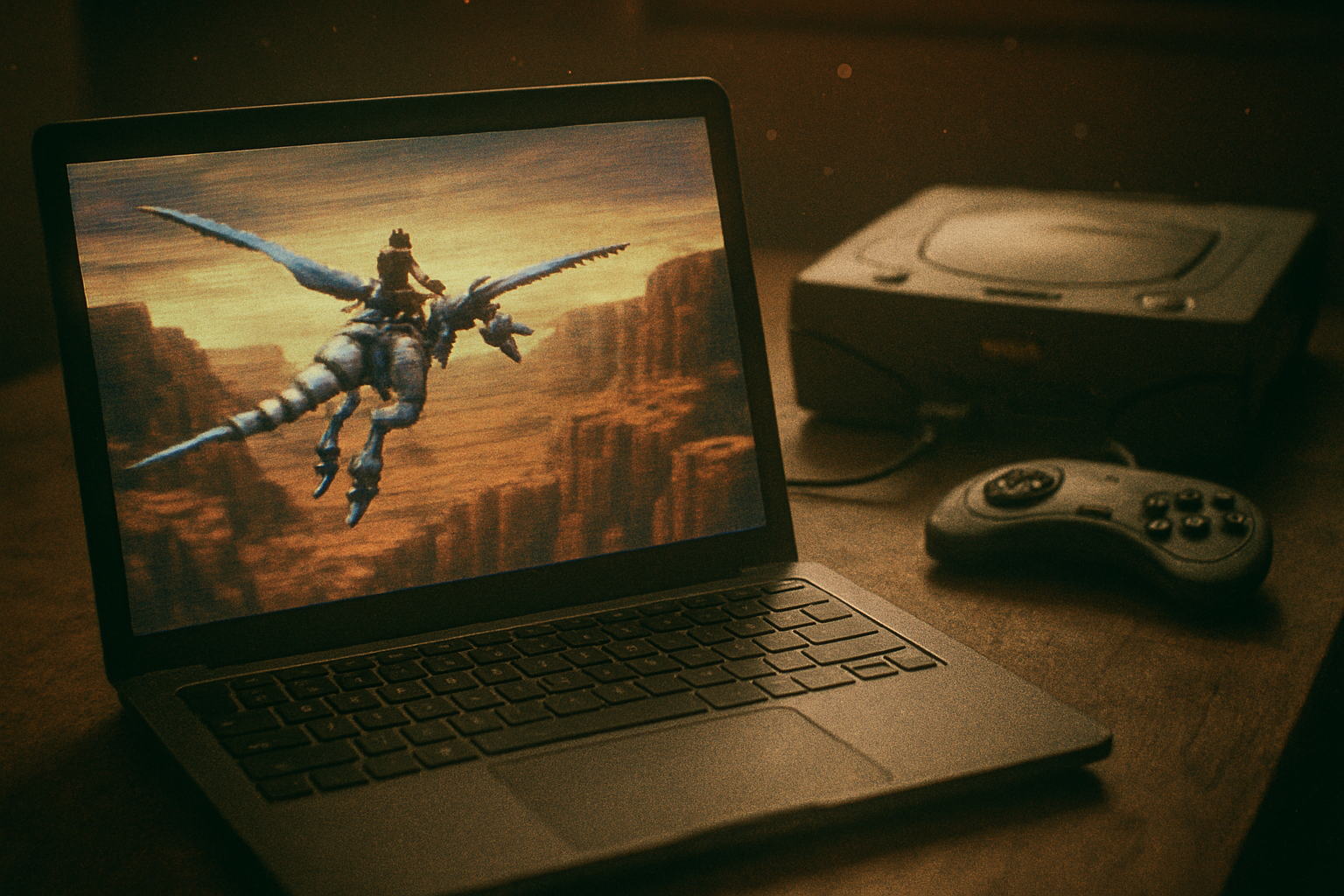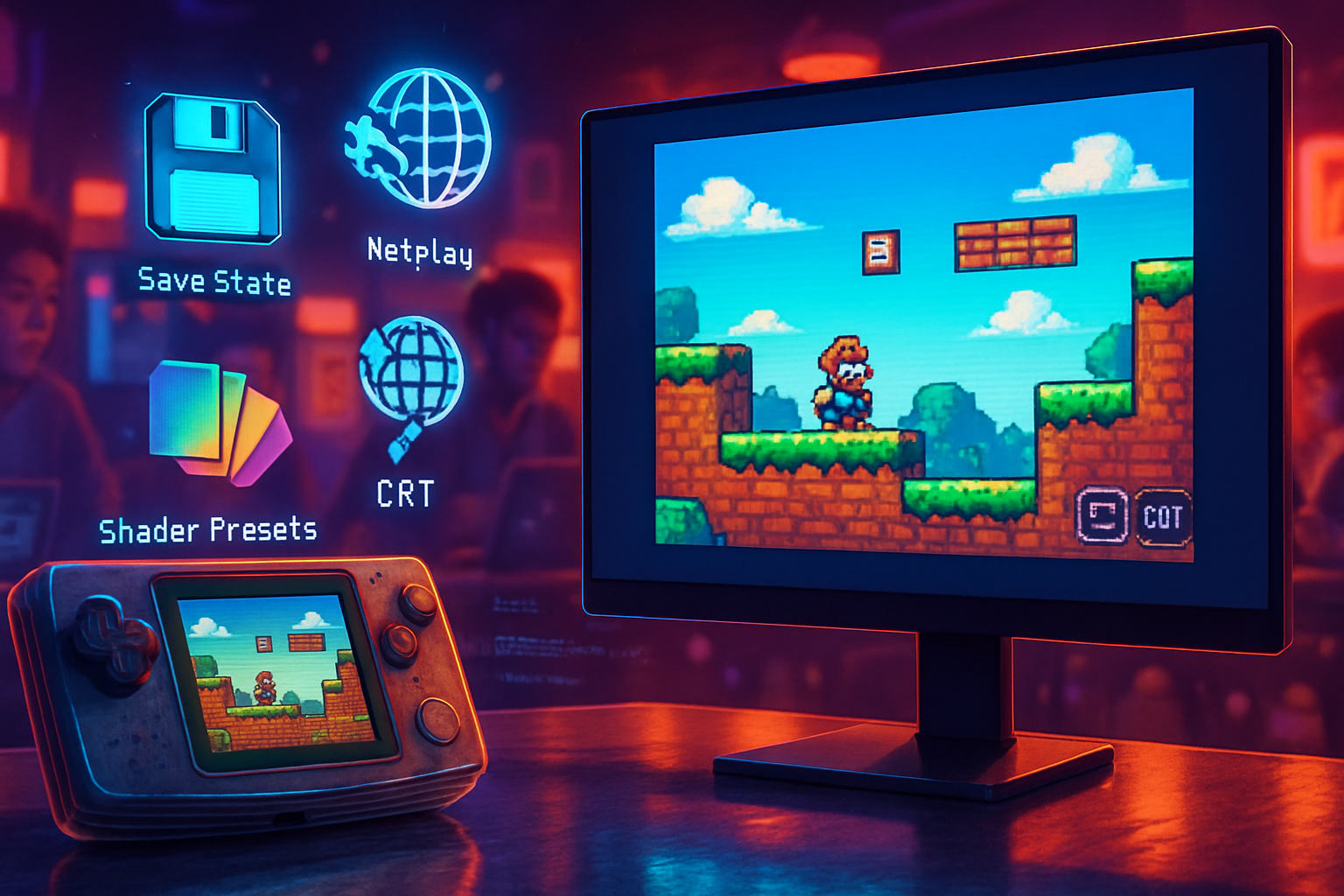· retrogaming · 7 min read
The Battle of the Best: Sega Genesis Emulators Reviewed and Ranked
An in-depth comparison and ranking of the top Sega Genesis (Mega Drive) emulators today - accuracy, performance, platform support, features, and which one you should actually use.

I still remember the first time Sonic seemed to run faster on a friend’s setup. We blamed the carpet, the controller, the alignment of the stars - anything but the software. Years later, when I started testing Genesis emulators, I learned the truth: speed, sound, and that inexplicable feel of ‘right’ or ‘wrong’ come from emulation choices no cartridge could fix.
Emulation is an art of second-hand memory. A good emulator makes hardware disappear; a bad one creates its own, often mendacious, mythology. This guide cuts through the nostalgia-smoke to rank the best modern Sega Genesis (Mega Drive) emulators for different users: purists, casual players, mobile commuters, and tinkerers who enjoy fiddling with VDP timing for fun.
Quick TL;DR - the winners
- Best for accuracy (purists) - BlastEm
- Best all-around / easiest multi-platform - Genesis Plus GX (via RetroArch)
- Best standalone Windows experience - Kega Fusion
- Best for preservation / debugging - MAME
- Best Android - MD.emu or RetroArch + Genesis Plus GX core
Read on for why, plus concrete settings, platform recommendations, and a few grudging confessions.
Why emulator choice still matters
Emulation isn’t “run ROM and play.” The Genesis’s identity rests on several quirky subsystems: the Motorola 68000 CPU timing, the Z80 co-processor used for sound, the Yamaha YM2612 FM synth and PSG chips, odd VDP (video) quirks, and edge-case mapper behaviour in some cartridges.
Those quirks produce results you notice: sprites flickering at just the wrong time, music losing its texture, or a title that runs fine everywhere except during the second act of a particular stage. Emulators make implementation choices - speed hacks, simplified audio, imperfect sprite limits - and those choices decide whether a run-through feels like the original or a cheap impersonation.
How I compared them (methodology)
I judged emulators across these axes:
- Accuracy - How faithful to original hardware (timing, sound, graphics) it is.
- Compatibility - How many titles work without glitches.
- Performance - CPU/GPU requirements and smoothness on typical systems.
- Features & UX - Save states, shaders, rewinding, controller mapping, netplay, and UI polish.
- Platform support & maintenance - Active development and availability on Windows/macOS/Linux/Android/iOS/Raspberry Pi.
I tested a cross-section of games: Sonic 1–3, Streets of Rage 2, Shining Force, Phantasy Star IV, and a handful of obscure carts known to expose edge-case bugs (bank-switching mappers, unusual VDP tricks).
The contenders (detailed reviews)
BlastEm - the accuracy champion
Pros:
- Extremely high-cycle-accuracy focus.
- Excellent handling of YM2612 / FM audio timing.
- Faithful sprite and VDP emulation - real behavior in edge cases.
- Active development aimed at correctness, not just speed.
Cons:
- Less polished UI for casual users.
- Heavier CPU demands at high-accuracy settings.
- Limited fancy features (shaders, elaborate frontend) compared to RetroArch.
Who should use it: preservationists and purists who want the closest possible reproduction of original hardware and are willing to pay the CPU tax.
Notes & resources: BlastEm’s goal is accuracy-first; if you care about exact audio and VDP quirks, it’s the gold standard. See the project repository: https://github.com/IllControl/BlastEm
Genesis Plus GX (via RetroArch) - the practical, cross-platform Swiss army knife
Pros:
- Excellent balance of accuracy and performance.
- Works as a Libretro core for RetroArch - instant cross-platform availability.
- Feature-rich - shaders, save states, rewind, netplay, cheat support, advanced controller configs.
- Low-to-moderate CPU usage; good on low-end hardware and Raspberry Pi.
Cons:
- Slightly less accurate than BlastEm in extreme edge cases.
- RetroArch’s UI can be daunting at first.
Who should use it: nearly everyone. If you want something that runs on Windows, macOS, Linux, Android, and consoles with minimal fuss, Genesis Plus GX via RetroArch is the pragmatic pick.
Resources: RetroArch (https://www.retroarch.com) and Genesis Plus GX source (https://github.com/ekeeke/Genesis-Plus-GX).
Kega Fusion - the comfortable Windows veteran
Pros:
- Very high compatibility with a broad library of games.
- Clean, straightforward UI aimed at desktop users.
- Historically excellent performance and controller support.
Cons:
- Not as active on all platforms; primarily a Windows-focused experience.
- Not as obsessive about cycle-perfect accuracy as BlastEm.
Who should use it: Windows users who want a no-nonsense, quick-to-configure experience and compatibility with tricky carts.
MAME - the archivist and debugging workhorse
Pros:
- Emphasis on preservation and correctness across platforms.
- Powerful debugger and logging for developers and ROM hackers.
- Runs many systems; integrating Genesis into MAME benefits preservation.
Cons:
- Heavier, more complex, and overkill for casual play.
- UI is utilitarian; configuration can be intimidating.
Who should use it: developers, ROM hackers, and anyone who wants the most archival-minded experience with debugging tools.
Reference: MAME official site - https://www.mamedev.org
Gens/GS and Regen - the nostalgic choices
Pros:
- Gens (and its forks) were staples of the 2000s era emulation scene.
- Regen offered high compatibility and some unique options.
Cons:
- Many branches are stale or unmaintained.
- They lack modern conveniences and cross-platform reach compared to RetroArch cores.
Who should use it: people resurrecting very old setups, or those who have fondness for classic UI and are willing to accept limited maintenance.
MD.emu (Android) - best for on-the-go play
Pros:
- Polished, native Android interface; excellent controller support.
- High compatibility and low latency on modern phones.
Cons:
- Paid app; not open-source.
- No single cross-platform install - mobile-only.
Who should use it: Android users who want a native app and reliable performance.
Feature comparison highlights (what actually matters)
- Sound accuracy (YM2612) - If you care about FM richness in games like Streets of Rage or Shining Force, choose BlastEm or Genesis Plus GX - they give better timing and fewer audio artifacts.
- Save states & rewinding - All modern options (RetroArch/Genesis Plus GX, Kega Fusion) offer these; BlastEm has save states but fewer niceties.
- Shaders & scaling - RetroArch shines here - CRT shaders, integer scaling, and aspect corrections.
- Netplay - RetroArch + Genesis Plus GX supports online play and is your best path for multiplayer over the internet.
- Debugging - MAME (and some Gens forks) provide deeper developer tools.
Platform picks (concrete)
- Windows (casual player) - Kega Fusion or RetroArch (Genesis Plus GX)
- Windows (purist / developer) - BlastEm or MAME
- macOS / Linux - RetroArch with Genesis Plus GX core or BlastEm where available
- Raspberry Pi - RetroArch + Genesis Plus GX (best balance of performance and features)
- Android - MD.emu for native app; RetroArch + Genesis Plus GX core for free/open option
- iOS - RetroArch (via sideloading / jailbreak routes) or alternatives in app stores where available
Practical setup & tweak tips
- Use integer scaling or 2x/3x nearest-neighbor scaling for sharp pixels; avoid automatic bilinear unless you want soft, smeared sprites.
- Set audio sample rate to 44.1 kHz unless you want odd pitch differences - some historical releases used 48 kHz; consistency matters across tools.
- Enable ‘accurate timing’ or ‘cycle-accurate’ modes if you test BlastEm or Genesis Plus GX and care about edge-case behavior - but expect higher CPU usage.
- If using RetroArch, enable ‘Run-Ahead’ for reduced input latency (at the cost of CPU) and match FPS to 60 Hz for NTSC games.
- For wireless controllers, prefer Bluetooth v4+ or a wired connection to minimize input lag.
Legality & ROMs - the boring but important part
Owning an emulator is legal. Owning ROMs isn’t straightforward. The safe, simple rule: use game copies you legally own (your own dumped cartridges) or access games through licensed re-releases and official collections. For more on the legal landscape and preservation issues, see the Electronic Frontier Foundation’s materials on game preservation and copyright: https://www.eff.org.
I will be blunt: people will play ROMs regardless of moralizing blog posts. But if you care about preservation and the long view, supporting legal re-releases funds rights-holders and future preservation projects.
Final verdict - recommendations by user type
- If you want the closest-to-hardware fidelity - BlastEm.
- If you want the best cross-platform convenience with great accuracy and lots of modern features - Genesis Plus GX via RetroArch.
- If you want a friendly Windows standalone experience - Kega Fusion.
- If you want mobile play with polished controls - MD.emu (or RetroArch on Android for a free option).
- If you want debugging and archival-grade work - MAME.
Closing thought
Emulation is a conversation between fidelity and convenience. Imagine three chefs trying to replicate a grandmother’s stew: one reverse-engineers every ingredient, one follows the recipe but shortcuts the simmer, and one sells the stew from a slick food truck and calls it ‘heritage cuisine.’ There’s room for all three - but if you want the stew that tastes like the original kitchen, choose the chef obsessed with the details.
If you want my single recommendation for most people: install RetroArch, load the Genesis Plus GX core, and-after five minutes of fumbling with shaders and controller mappings-play. If you begin to notice that Phantom Limb in Streets of Rage is missing its brittle FM bite, then it’s time to fire up BlastEm and stop pretending ‘close enough’ is the same thing as fidelity.
Further reading and resources
- RetroArch - https://www.retroarch.com
- Genesis Plus GX (libretro core) - https://github.com/ekeeke/Genesis-Plus-GX
- BlastEm - https://github.com/IllControl/BlastEm
- MAME - https://www.mamedev.org
- Electronic Frontier Foundation (game preservation and copyright) - https://www.eff.org
- Sega Mega Drive / Genesis overview (hardware/context) - https://en.wikipedia.org/wiki/Sega_Genesis



